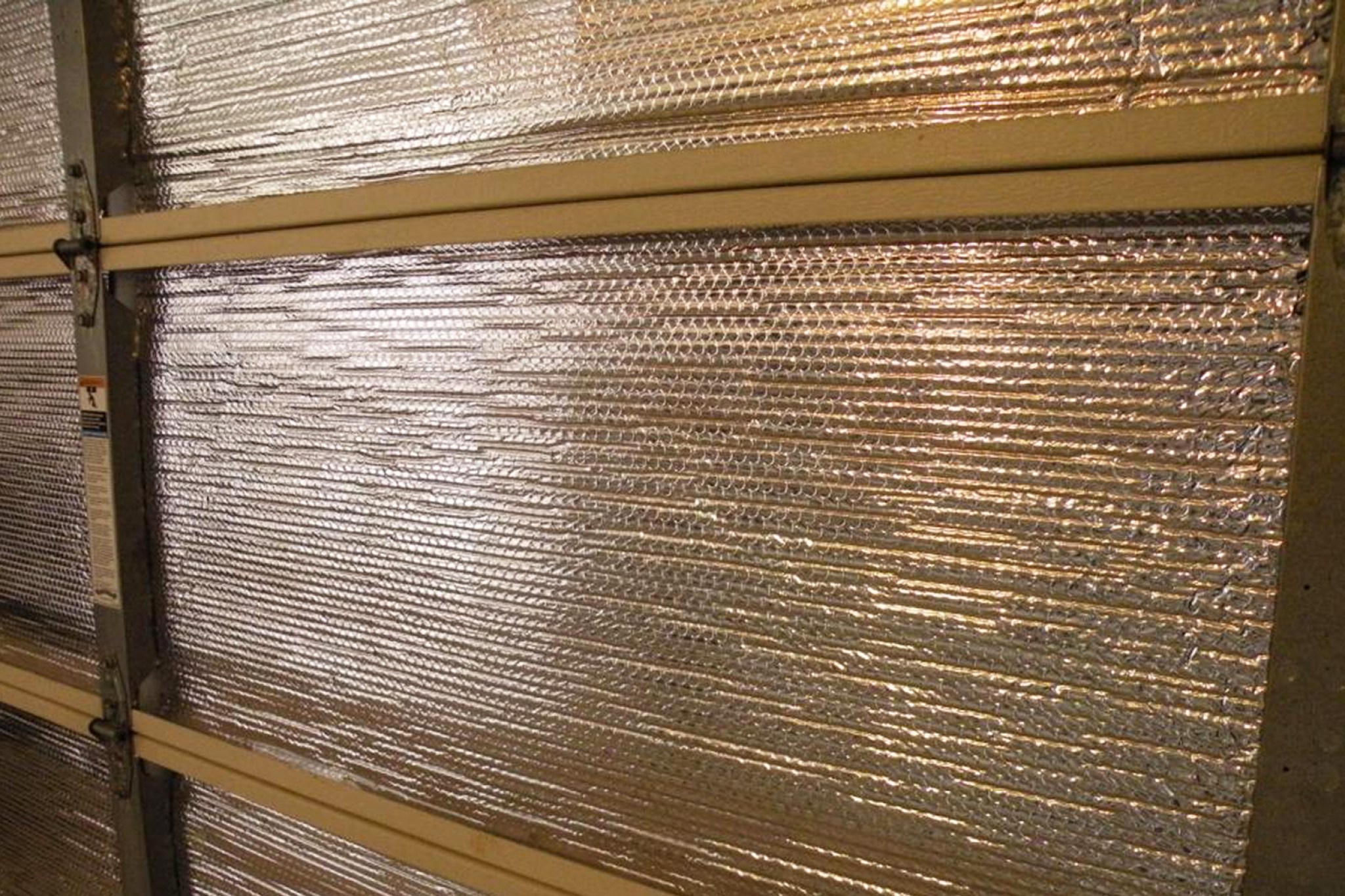Garage door insulation can make your life warmer, cooler, and quieter. It lowers energy bills, acts as a barrier between you and street noise, and brightens an otherwise dreary space.
Garage door insulation is an easy DIY project; it’ll cost you about $200 to insulate two 9-foot-wide doors.
Types of Insulation
Any insulation type will increase the energy efficiency of your garage door. Here are the most popular types to apply to the back of garage doors:
- Batt insulation. This flexible insulation, often found stuffed into exterior walls, is commonly made of fiberglass. It’s usually backed by paper or foil, which act as vapor and air barriers. Insulating values are R-3 to R-4 per inch of thickness. Cost is about 30 cents per square foot.
- Foam board insulation. These rigid panels, typically made from polystyrene, provide a high insulating value for relatively little thickness. Panels most often range from 1/2 inch thick (R-3.3) to 1 inch (R-6.5). Foam board often is faced with aluminum or vinyl. ($20 for a 4-foot-by-8-foot sheet that’s 1 inch thick.)
- Reflective insulation. Rigid boards and rolls of reflective insulation have highly reflective aluminum foil applied to one or both sides of insulation materials, such as cardboard and polyethylene bubbles. This type of insulation reflects radiant heat, making it a good insulation choice for garages that heat up in summer or hot climates. Its approximate R-value is 3.5 to 6, depending on the way you apply it. (A 4-foot-by-25-foot roll is $42).
Matching Insulation to Your Garage Door
The goal is to match your garage door to an insulation that’s easy to install and appropriate for your climate.
Steel garage doors. These doors can accommodate any type of insulation. Stuff the flexible insulation in the frames around the panels, with the fiberglass side touching the door. Or squeeze cut-to-fit foam board insulation into the frames.
Wood frame-and-panel doors. Cut and fit rigid insulation into the recesses between the door frames. For extra climate control, install two layers of foam board.
Flat garage doors. Foam board or reflective insulation is the best fit for garage doors without panels. Glue or tape the insulation to the garage door.
Insulation Kits
Even though buying and cutting insulation isn’t hard, garage door insulation kits make it even easier. They contain:
- Insulation -- rolls or boards -- cut closer to the size of garage panels than if you bought these yourself, though you’ll still have to trim.
- Fasteners or tape to hold insulation in place.
- Higher-end kits throw in gloves and/or a utility knife.
Kits to insulate a 9-foot-wide garage door cost $50 to $70.
Heads Up!
Adding insulation to a garage door adds weight. Extra weight isn’t usually a problem with 9-foot-wide doors, but can strain the opening mechanism of larger doors. Your garage door’s spring tension might have to be adjusted -- a job best left to a garage door professional.
